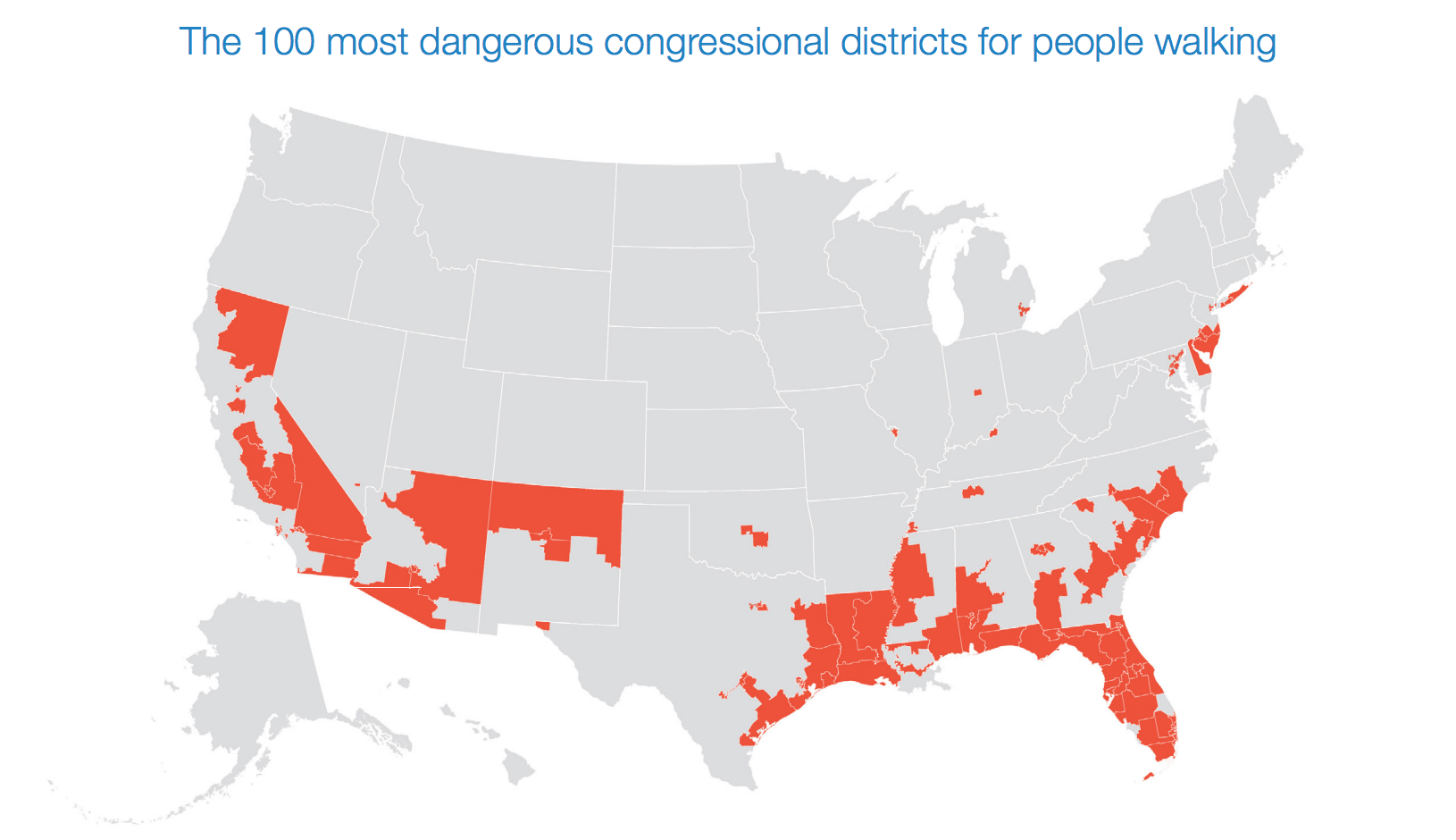
News
By Steve Davis, July 10, 2019
 Support this long-awaited federal Complete Streets bill—tell your senators and representative to co-sponsor the Complete Streets Act of 2019
Support this long-awaited federal Complete Streets bill—tell your senators and representative to co-sponsor the Complete Streets Act of 2019
Who represents the most dangerous districts in the country for people walking?
Today the National Complete Streets Coalition is also releasing an addendum to Dangerous by Design 2019 that looks at people struck and killed while walking by congressional district and provides a ranking of the 100 most dangerous House districts in the country.
 100 representatives should be most urgently calling the bill sponsors to immediately support the Complete Streets Act of 2019?
100 representatives should be most urgently calling the bill sponsors to immediately support the Complete Streets Act of 2019?
View the full report and list over on the Dangerous by Design page. Click on “most dangerous districts” tab to see which districts are the most deadly, and also which districts saw the biggest increase in fatalities from 2008 to 2017.

We have spent decades designing streets solely to move cars as quickly as possible instead of prioritizing the safety of all people. The result? The number of people struck and killed by drivers while walking increased by 35 percent over the last decade. We are in the midst of an astonishing safety crisis as the United States has become an incredibly deadly place to go for a walk.
And that danger is not evenly distributed. Dangerous by Design showed how the risks are far greater for people walking in low-income communities, older adults, and people of color. This short addendum shows how 40 percent of all pedestrian fatalities from 2008-2017 occurred in just 22 percent of all congressional districts (100 of 435). More than 19,200 people were struck and killed in these 100 districts during that period.
The federal government needs to take the lead on prioritizing safer streets.
Federal dollars and policies helped create these unsafe streets in the first place, and federal funds, policies, and guidance have a significant role to play in fixing our existing streets and in designing the streets we’ll build tomorrow.
That’s why we’re excited to support the Complete Streets Act of 2019—the product of more than a decade of work by the National Complete Streets Coalition and Smart Growth America. It’s modeled on a landmark law in Massachusetts, where a state law set aside money for municipalities to build projects to improve safety for everyone who needs to use the road. But to be eligible for the money, they were required to pass local Complete Streets policies and create implementation plans. As a result, dozens and dozens of policies have been passed in the state, which will certainly lead to a decrease in pedestrian deaths over time.
It is essential that Congress advance this bill and then incorporate it into the next long-term transportation law. While the expiration of the FAST Act isn’t until next year, policy decisions about what will and won’t be in its replacement are being made right now, with hard and fast deadlines just days and weeks away.
Read the new district report and send a message to your senators and representative today.
Related News

© 2025 Smart Growth America. All rights reserved
Site By3Lane Marketing












